If you are old enough, you might remember seeing paper chains on the Christmas Tree. If you are older, you may have made some of those paper chains. Strips of colored paper taped, glued or stapled together to make a continuous chain which signaled the holiday season.
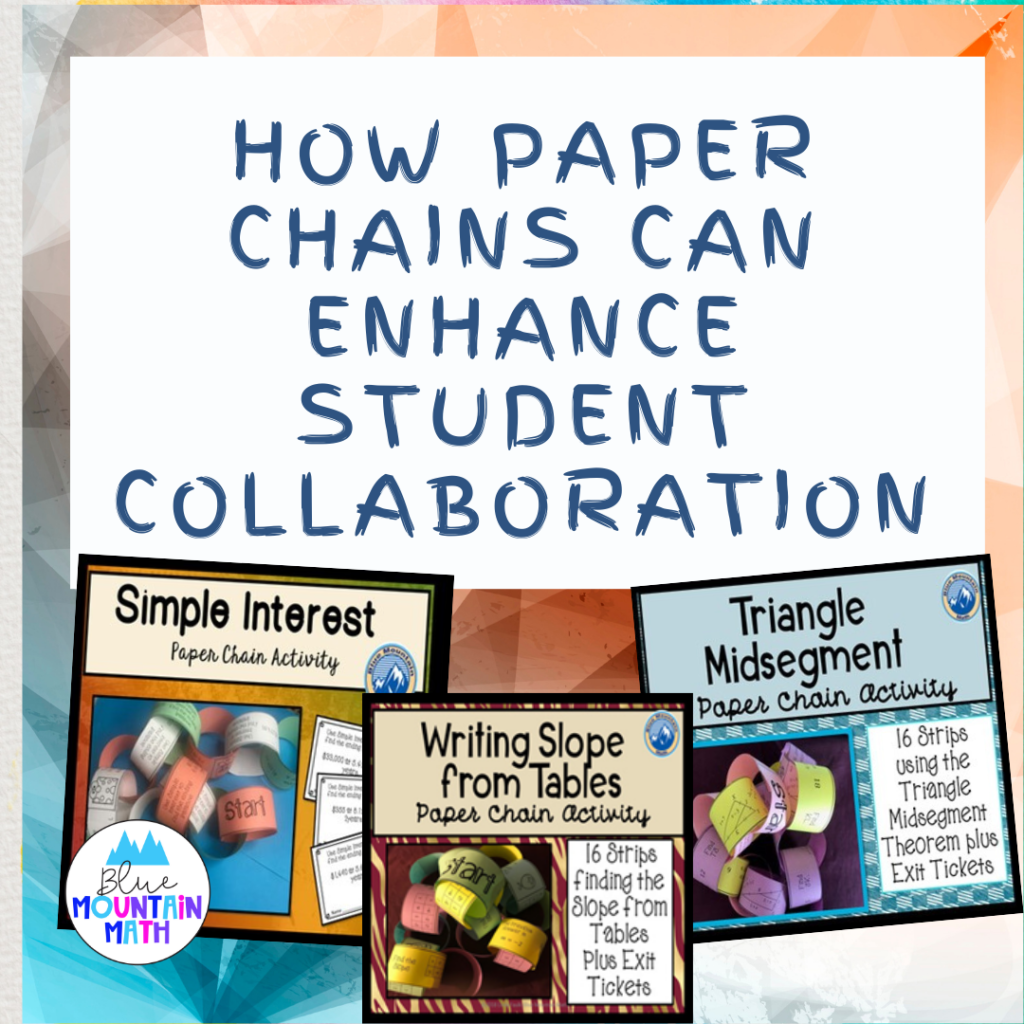
Most people will not remember, that’s Okay, because they have made a comeback in the classroom. I have been using the idea of paper chains in the classroom as a partner activity (or with trios) for several years.
What is a Paper Chain?
Paper Chains are strips of paper that form links. The idea of a paper chain in the math classroom is to start with one strip of paper, solve the problem and then find the strip with that answer for your next link to the chain.
In many respects, it is similar to a scavenger hunt but all the pieces are on the desk. It is an ordering activity that asks students to solve problems, find the answer and continue until the chain is complete. It is like a multiple choice question with 15 choices (at least to start).
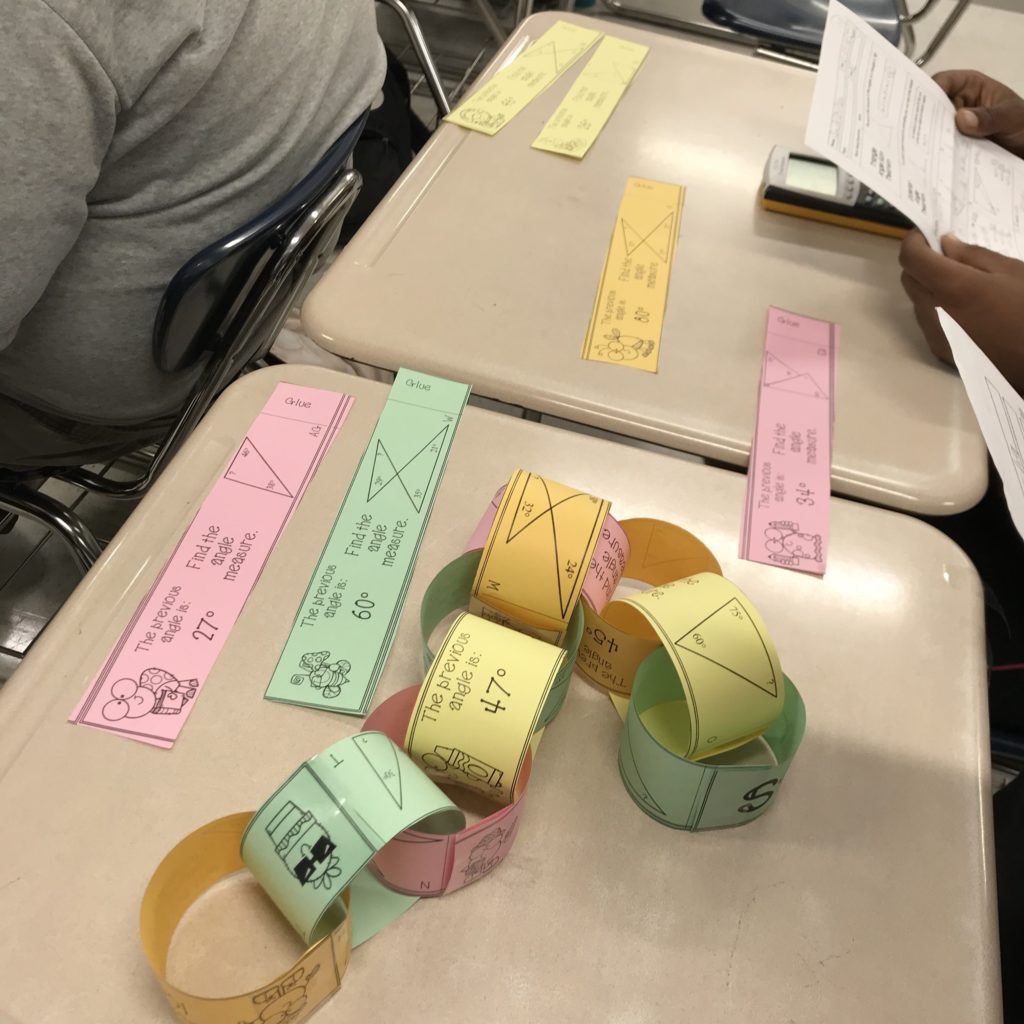
What are the Benefits?
The paper chains make a great partner activity. Students have involved academic conversations about math as they work to solve each of the problems. They discuss the answers and must come to an agreement in order to proceed. The chains are linked together in order, they cannot have two branches.
Kids are intrigued by the process as though they are solving some puzzle. They are driven to complete the activity in a way that they are not driven to complete a worksheet.
Getting Started
Whenever I use paper chains in the classroom, I do all the printing, cutting and sort the strips ready for the students. I do not have students cut their own strips. Anyone who has had students use scissors in the classroom will understand why. This activity could easily be stretched to a weeklong project if students do their own cutting. And there would be lots of cutting mistakes.
Pass Out Cut Stacks
I pass out the stack of strips (stapled together) to each pair of students. I then show them how to remove the staple without tearing all the strips (grab half the strips and quickly separate). This removes the staple from half the strips and leaves the staple loose and easily removed from the rest. Then I have the students could the number of strips.
Count the Strips
Some of my paper chain activities have 16 strips and some have 15 strips. If students count any number other than what they should have tells me that I may have made a mistake when assembling. But it is a mistake easily fixed. I always have extra strips, sometimes to fix my error and sometimes students tear a strip.
Model the Process
I am a firm believer that the first time (or maybe the second and third time) you do any activity you need to show it, say it, have an example and start the students off. I have a finished product (not the one we are working one) available to show students what the finished product will look like.
Begin with Start
I begin by showing that in each stack there is a strip marked “start” and ask the pairs to find that strip. When they all have it, I have them hold it up and show the class.
I point out the problem on the strip and then I ask them to solve it giving them a few minutes. When students have the answer, I show them that their correct answer is on another strip on their desk. I wait until everyone has it and holds it up.
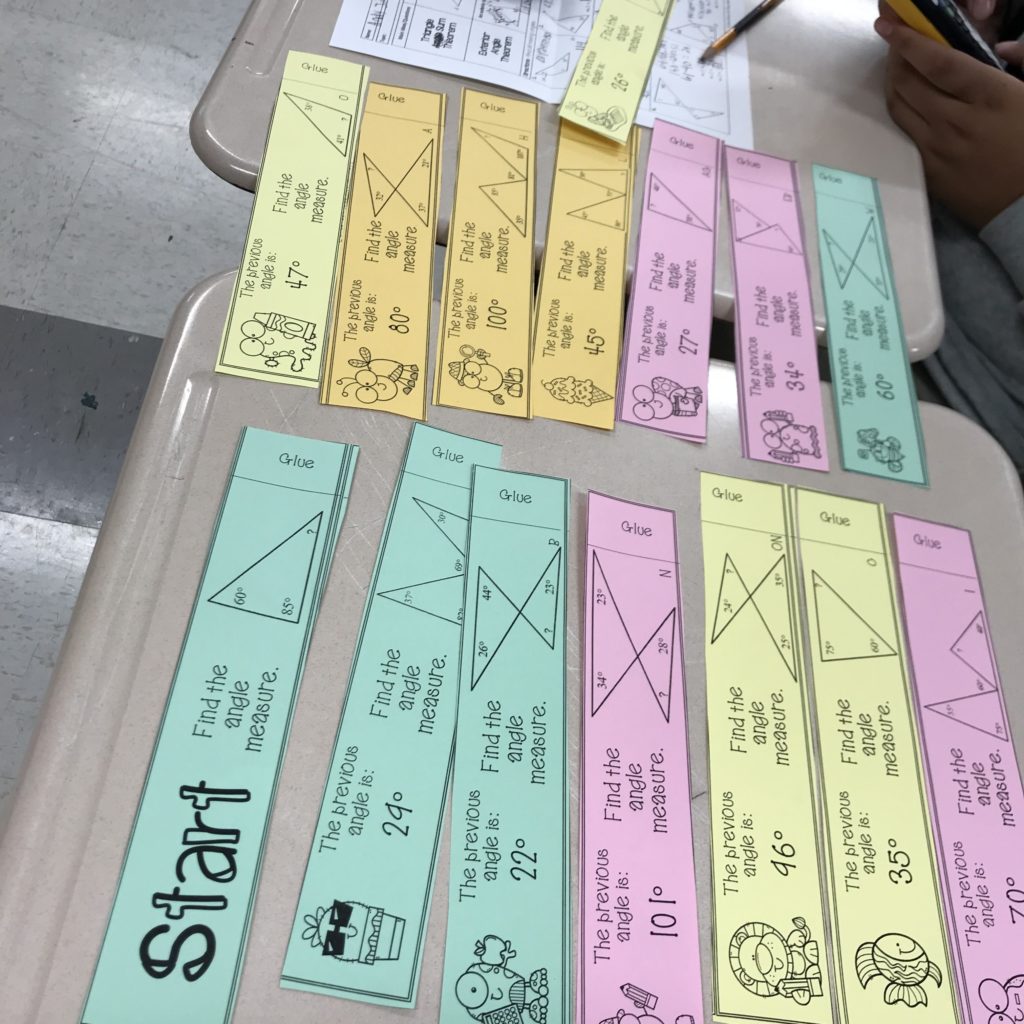
First Link Done
Then I show how to fasten the first strip into a closed circle and tape it, glue it or staple it closed. Some students will prefer tape, some glue (glue stick) and others will insist on staplers. I let them use whatever they like as long as the job gets done. What does not work is liquid glue, it doesn’t dry fast enough and makes an ugly mess.
Students then take the second strip, work that problem and find the answer. Slip the second strip into the circle of the first strip and fasten it closed. Then they work the problem on the third strip and continue until all the strips are fastened together.
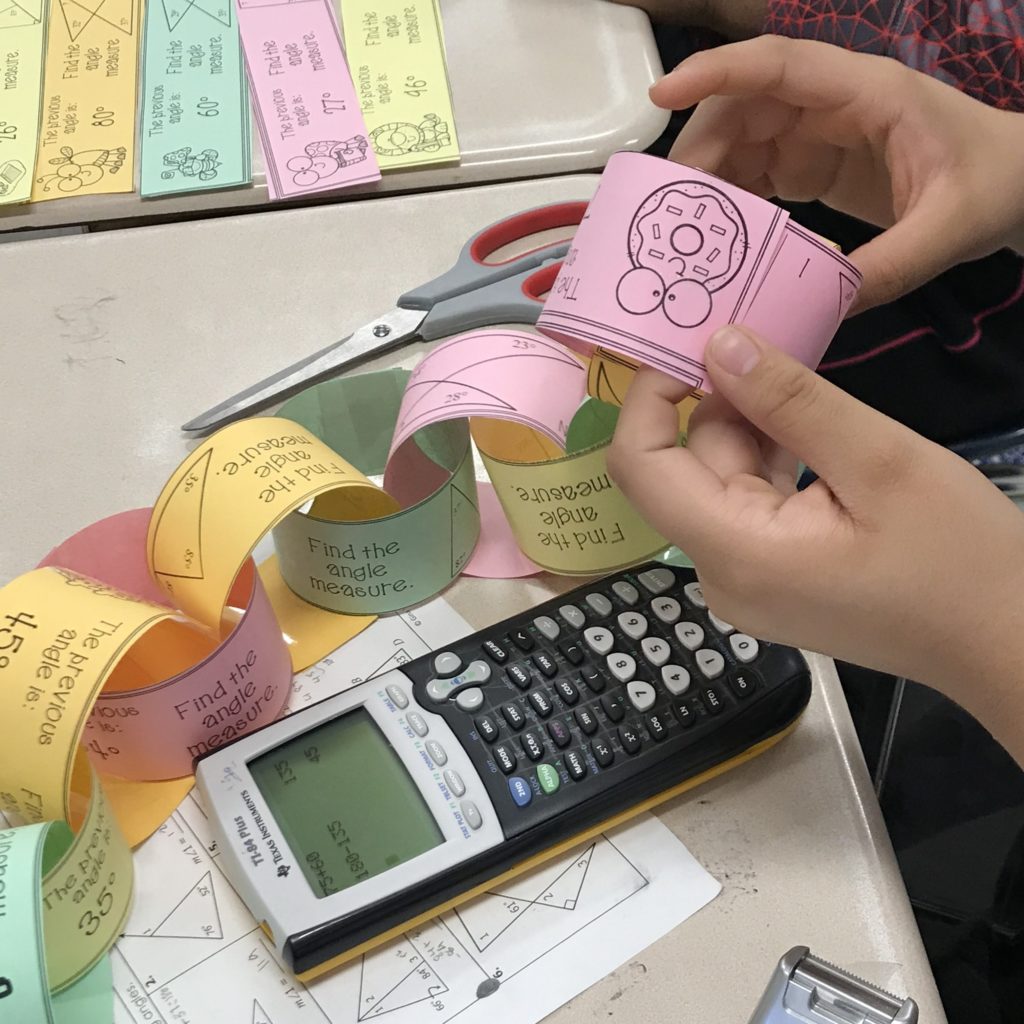
After the first time we have done a paper chain activity, I tell students to lay out the strips for me to check before assembling. Half students resist this idea and want to assemble as they go. It is probably more fun to assemble than to solve the problems and I am ok either way, as long as they understand if they have a mistake, they will have to fix it.

Early Finishers
Like any other activity in the classroom, some students will finish early. Other students, understanding students are faster will go look at their strips to see the order. So a teacher watchful eye is needed.
I check and collect the chains as they are completed with student names on the start strip. The paper chains I use have a word or phrase on the strips to make checking easier. Then finished students are declared math ambassadors and are now available to offer helpful advice (no answers) to struggling students.

Paper Chain Activities
I find the best paper chain activities are straight forward content with a simple question and answer. Most effective are those topics where students can solve in a few minutes. You can see the variety of Paper Chain activities I have available here.
I currently have 70 different paper chain activities available in a variety of topics. Everything from Middle School topics to Algebra, Geometry and Consumer Math.


Other Helpful Tips
I have never had a pair of students not finish a chain. Sometimes, they come in late that day, run out of time and take the chain home to finish and bring back the next day (yes, i have extra stacks that can go home with individual students). Everyone finishes.
I like printing them on colored paper. I furnish the colored paper for the school copier but colored paper is not necessary. White paper and a few colored pencils will still engage students and review math at the same time.
I display the chains everywhere. Students see them, remember the activity and often ask when we can do a paper chain again. Other teachers come in my class, ask how to use a paper chain activity. Visitors comment on the paper chains. The display is always a conversation when people come in the class.
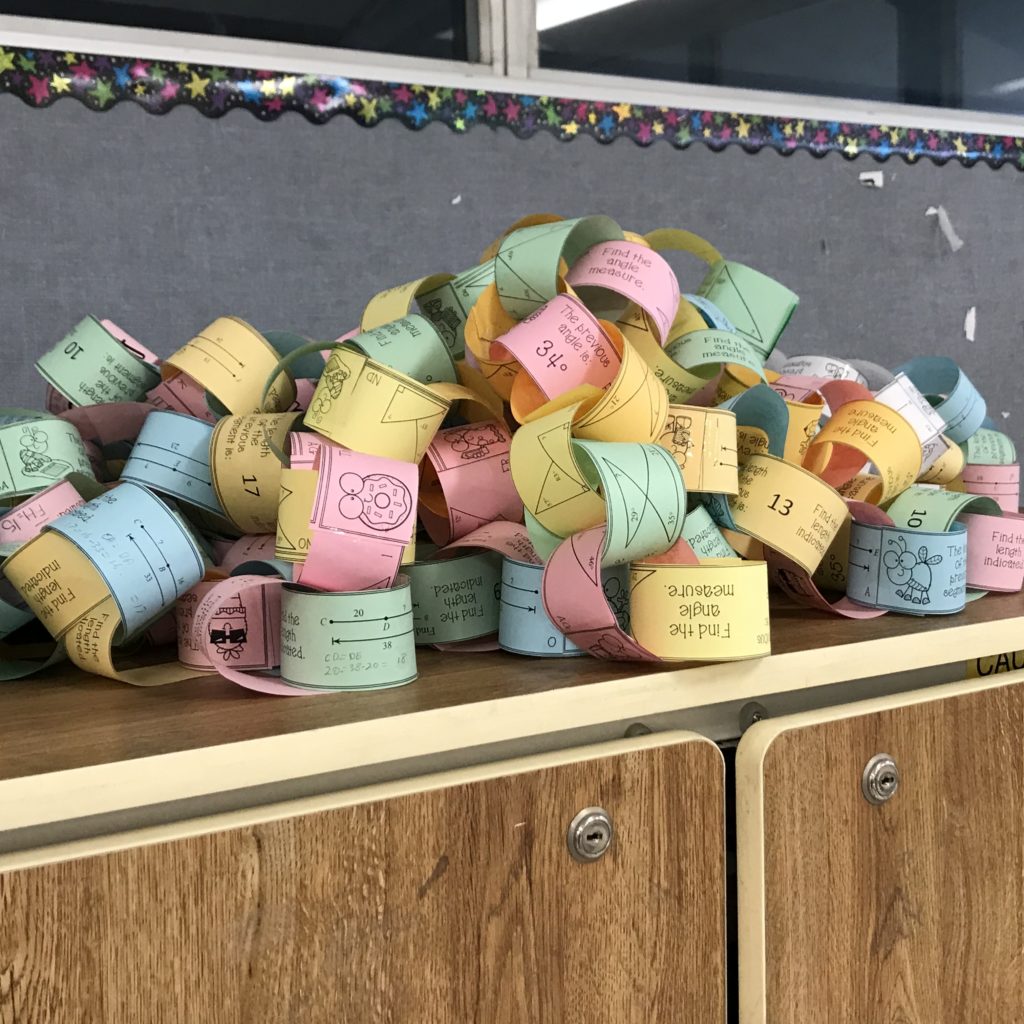
One Last Thought
I have had colleagues from elementary school visit and compliment the display but are curious why high school students would do this activity. “It seems so childish” she said. I suppose it does, but even high school kids like to have fun.
I only know that my students enjoy this activity. Other high school teachers who have used this activity have the same experience. The kids like working together, having discussions and making these paper chains. I guess if they were a lot older and had done this for their Christmas Trees, it wouldn’t be such an exciting activity.
Try a paper chain activity in your classroom and let me know how it goes. Better yet, send me a picture of your students working on a chain and email to [email protected].











Leave a Reply